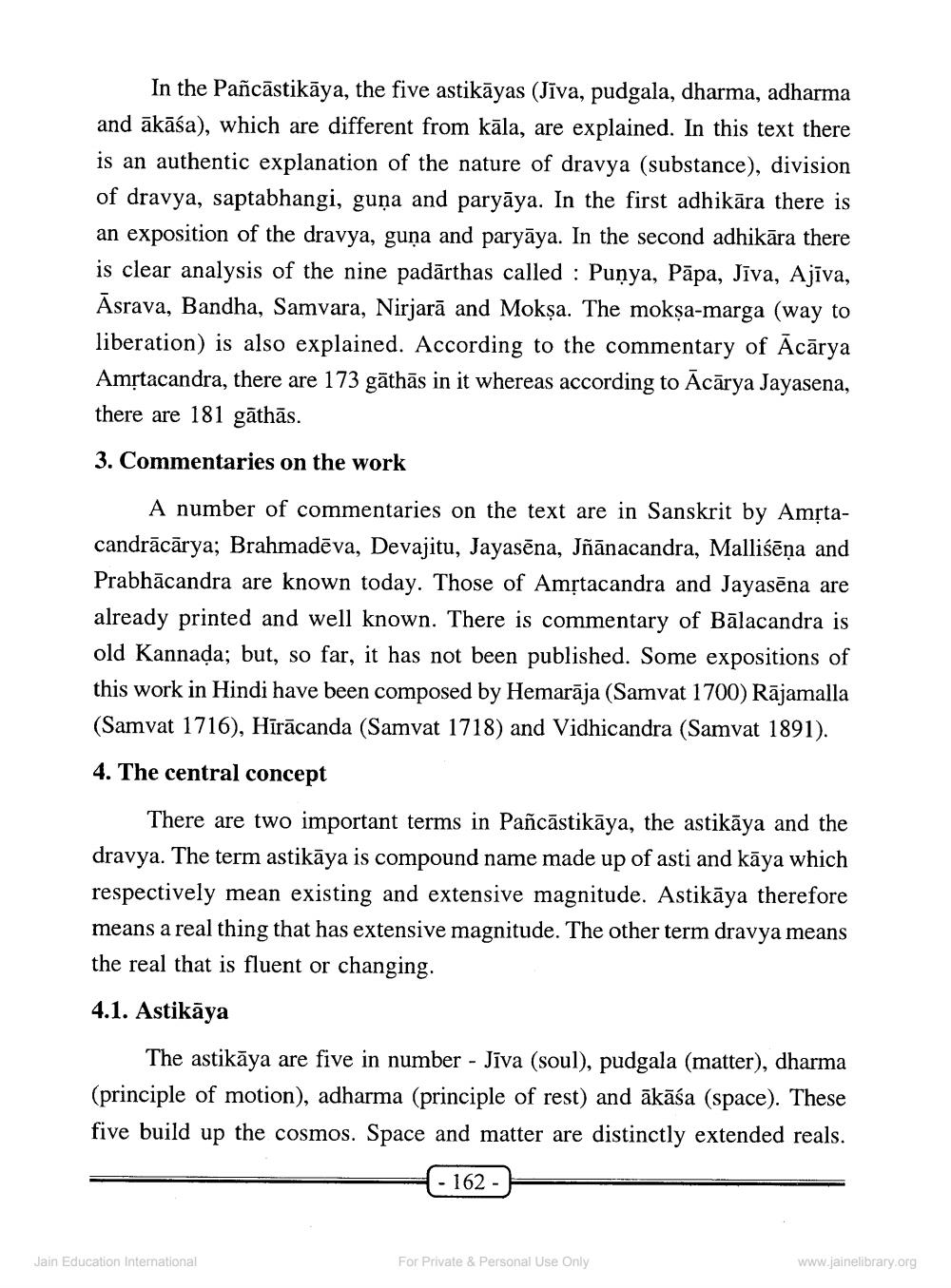________________
In the Pañcāstikāya, the five astikāyas (Jīva, pudgala, dharma, adharma and ākāśa), which are different from kāla, are explained. In this text there is an authentic explanation of the nature of dravya (substance), division of dravya, saptabhangi, guna and paryāya. In the first adhikāra there is an exposition of the dravya, guņa and paryāya. In the second adhikāra there is clear analysis of the nine padārthas called : Punya, Pāpa, Jīva, Ajīva, Asrava, Bandha, Samvara, Nirjarā and Mokșa. The mokșa-marga (way to liberation) is also explained. According to the commentary of Ācārya Amrtacandra, there are 173 gāthās in it whereas according to Acārya Jayasena, there are 181 gāthās. 3. Commentaries on the work
A number of commentaries on the text are in Sanskrit by Amstacandrācārya; Brahmadēva, Devajitu, Jayasēna, Jñānacandra, Malliśēņa and Prabhācandra are known today. Those of Amộtacandra and Jayasēna are already printed and well known. There is commentary of Bālacandra is old Kannada; but, so far, it has not been published. Some expositions of this work in Hindi have been composed by Hemarāja (Samvat 1700) Rājamalla (Samvat 1716), Hīrācanda (Samvat 1718) and Vidhicandra (Samvat 1891). 4. The central concept
There are two important terms in Pañcāstikāya, the astikāya and the dravya. The term astikāya is compound name made up of asti and kāya which respectively mean existing and extensive magnitude. Astikāya therefore means a real thing that has extensive magnitude. The other term dravya means the real that is fluent or changing. 4.1. Astikāya
The astikāya are five in number - Jīva (soul), pudgala (matter), dharma (principle of motion), adharma (principle of rest) and ākāśa (space). These five build up the cosmos. Space and matter are distinctly extended reals.
- 162 -
Jain Education International
For Private & Personal Use Only
www.jainelibrary.org




